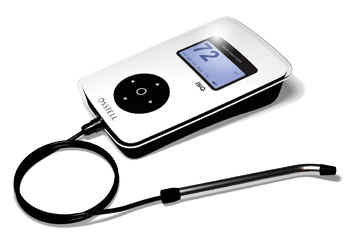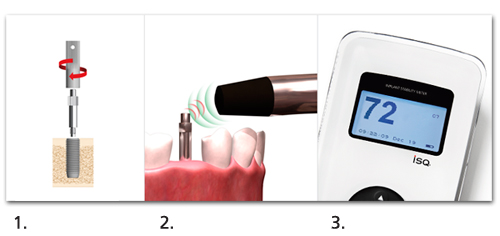| Osstell
ISQ - the objective way to measure implant stability. |
 |
Osstell
- comfortable, fast and easy to use
1. The SmartPeg is attached to the implant
2. The hand-held probe stimulates it magnetically
3. The displayed ISQ value reflects the degree of stability.
The scale ranges from 1 to 100, the higher the ISQ,
the more stable the implant.

Implant stability is measured by using the instrument
together with the wireless SmartPeg attached to an implant
or abutment. The technique is contactless, totally non-invasive
and patients experience no sensation from the measurement,
which takes 1-2 seconds. Stability is displayed as an
ISQ-value by the instrument. This value (Implant Stability
Quotient) is derived from the resonance frequency of
the peg, which in turn depends on the stability of the
implant.
If the bone is non-homogenous, the SmartPeg
automatically vibrates in two modes - indicating the
highest and the lowest stability directions. The instrument
therefore provides a correct value for the highest as
well as the lowest stabillity of the implant. To make
sure to measure both values, the probe should be held
perpendicular to the jaw line for one measurement, and
in line with the jaw line for the other measurement.
The two ISQ’s represent these values. If the instrument
finds them both at the same time, and they differ more
than 3 ISQ units, they are presented on the display
together.
Measurement
directions:

|